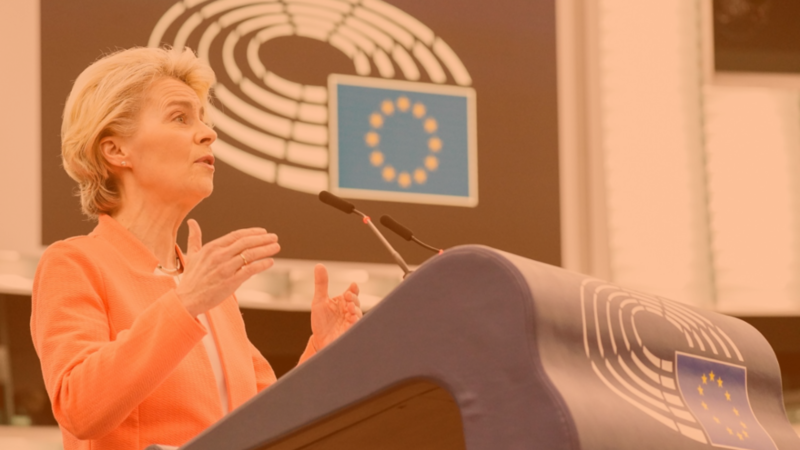On June 2, the statue by the British sculptor Thomas J. Price was unveiled at the Central Station of Rotterdam of a black woman standing proudly in casual attire. The Dutch newspaper Volkskrant was quick to mention that this statue – the first of a series of art works by internationally known artists to be revealed in Rotterdam – was financed by the second-richest family in the Netherlands, the Van Der Vorm family. This is a family that stays away from the public eye. They have made their fortune through generations of shrewd business practices, and philanthropy has always been part of their modus operandi.
But what’s wrong with rich people using their money to support arts, sports or green solutions, one might ask. Isn’t it great that they contribute to society by putting their riches to good use? It seems to fit the dictionary definition of philanthropy as ‘goodwill to fellow members of the human race, especially: active effort to promote human welfare’.
The Greek root of the word philanthropy is ‘loving people’ and yet a closer look at the activities of the oligarchs reveals that they, in fact, have little to do with any kind of compassion with fellow human beings. More often than not, there are strings attached to these activities. If it’s not a plain tit-for-tat in exchange for political power or some economic opportunities (such as tax deductions), there’s likely to be some other ulterior motive. At the very least, these activities work as PR for the oligarchs to promote themselves as caring and humanistic while drawing attention away from the exploitative practices they make their fortunes with.
A lot has been said and written about this topic recently. The most prominent critic is probably Anand Giridharadas, who convincingly argues that what philanthropy does most of all is to perpetuate the status quo with its income inequality and the pertaining social issues.
The crux of the problem with philanthropy becomes more visible, if we recognise the status quo: philanthropy is maintained as a specific system of power distribution – namely, oligarchy; power of the few. When it comes to public spaces, institutions and resources, the decisions should be made publicly and democratically.
Philanthropy tends to bypass the democratic processes of decision-making, as the oligarchs knock on the doors of the decision-makers and present a detailed plan – including the funding – of their project. Anyone without equally deep pockets is not likely to be able to compete with such a plan, and it’s only too easy for the decision-maker to just run with the readily presented project.
I’m not claiming that all philanthropy is done with malicious intentions. The Volkskrant reporting, however, leaves little doubt that the philanthropy of the Van Der Vorms always comes with strings attached. When asked whether this bothers the mayor of Rotterdam, Ahmed Aboutaleb, he answered: “Completely irrelevant. He [Martijn Van Der Vorm, the head of the family business] is a man I can call and who can call me, and he’s there if I need him. Rotterdam would look very different without him.”

The statue of a black woman erected in Rotterdam that has sparked rife debate / by Mikko Karjalainen.
Artwashing
It could of course be argued that we wouldn’t have Michelangelo, Mozart, Rembrandt or Beethoven without the patronage of arts by the elites. But I have also heard some say that we wouldn’t have jazz and blues without North American slavery. The argument being that ‘something good’ has come out of that period of extreme human suffering. The latter is not directly related to the present discussion about philanthropy, but there is some commonality here.
Whether it’s the church, royalty or some other elite paying for art to be created and displayed in public spaces, there’s a form of artwashing taking place. Much like greenwashing practices only work to maintain the status quo with little positive environmental effects, the art the elites support works to cover the roots of their existence – their emergence from inequality and exploitation – by diverting people’s attention to the arts they enable. Sportswashing – the rich buying or sponsoring sports clubs and events – works with the same idea; the age-old ‘bread and circuses’.
This is not an argument against the value of the various artistic creations – even whole cultures and traditions, one could argue – the elite patronage has enabled. The aforementioned statue revealed in Rotterdam is a highly acclaimed piece of art. Not unlike mayor Aboutaleb stated above regarding Rotterdam, the world would look very different without the patronage of the elites of centuries and millennia past.
The question I want to raise, however, is: Is this kind of artwashing – alongside sportswashing and greenwashing – the way we want to engage with our creativity? What are the consequences of letting the oligarchs bypass or co-opt our democratic institutions to pursue their pet projects? Does Rotterdam, the poorest city of the Netherlands, really need a new dance centre – another project of the Van Der Vorm family – or could that space be better used for something that alleviates poverty, such as affordable housing? Who are all these projects actually for?
(Re)claiming public spaces
The new statue in Rotterdam is called Moments Contained by the British sculptor Thomas J. Price. Price’s works are a reference to classical ancient Greek, Roman and Egyptian sculptures and mostly depict black, fictional characters. They challenge the conventional, ‘highbrow’ fine arts practice of sculptures representing ‘important’ figures of history. Price also envisioned his work to be placed in a public space to challenge the perceptions of who is allowed to be represented in such frequently visited areas.
What does it mean, then, for this powerful work of art, this larger-than-life, proud, black woman, being placed in the perhaps most public of spaces in Rotterdam, by the foundation of the oligarch family Van Der Vorm? What do we make of this (artistic representation of) a black female body being purchased and displayed by a rich white family?
A cue to an answer might be found in the name of the art work. The statue depicts the protagonist ‘containing’ a moment in a calm, quiet posture, but with visible tension (fists in her pockets). Soon after being placed at her new ‘home’, the woman witnessed a protest against the injustice in the Sanda Dia case. About a hundred protesters gathered around the statue to demand justice for Sanda Dia’s murder, with their fists in the air. Speeches were given expressing the thoughts and emotions Sanda’s story evoked in the speakers. There was spoken word art and singing.
Price’s statue was also mentioned by one of the speakers, Lisa McCray. She talked about the presence of certain bodies in public spaces and how the reception of this statue in Rotterdam was not unanimous, to say the least. What none of the speakers mentioned – perhaps they were unaware of – was that it was not the people’s choice to have this statue here. None of the Rotterdammers this statue is supposedly for were asked whether this is the place and manner they would like to be represented. In other words, as already mentioned, there was no democracy in the decision-making regarding this statue.

Protesting, however, is in the heart of healthy democracy and has the power of reclaiming some of the spaces that might be occupied by, or through, undemocratic forces. The Sanda Dia demonstration effectively protested against oligarchy on multiple levels simultaneously: Sanda Dia was a casualty of wealthy white kids (sons of some of Belgium’s rich and powerful) exerting their power through an age-old institution of privilege, the student association. At the same time, this protest created an unprecedented moment. It contextualised the presence and posture of the statue around which the protesters gathered. They claimed that space with their fists up, not for violence but for resistance and perseverance. Resistance to the continuing oppression by the powers that be and perseverance through the solidarity that was on display at the very protest.
It has been said that art is larger than life. In the case of Moments Contained, as mentioned, that is literally so. In addition to her size, the bronze woman will stand at the square in front of the Rotterdam Central Station for a long time and witness many more, more or less ‘contained’, moments. The statue or its place may not have been chosen by the people, but its meaning will be created and recreated by the people creating the various moments in that space. Some speakers in the protest were talking about their frustration of having to gather again and again to commemorate a person of colour fallen under the oppressive system. I wholeheartedly join them in the hope that we can gather to celebrate the life of our living fellow humans instead.
Does philanthropy belong to democracy?
Rotterdam council member Van der Velden sums it up neatly: ”Do you know what I would call philanthropy? Paying your taxes.” True philanthropy as ‘loving people’ – its original meaning – is actually only possible through democracy. Any other way would be patronising as well as a form of oligarchy – power of the few.
While the oligarchy still has a tight grip on our material existence, we cannot let them control our creativity and passion. These are the forces for good which, in solidarity, will bring us victory. Solidarity and love will always win in the end, so let’s counter philanthropic artwashing with lovewashing!
Do you want to be informed of DiEM25's actions? Sign up here















